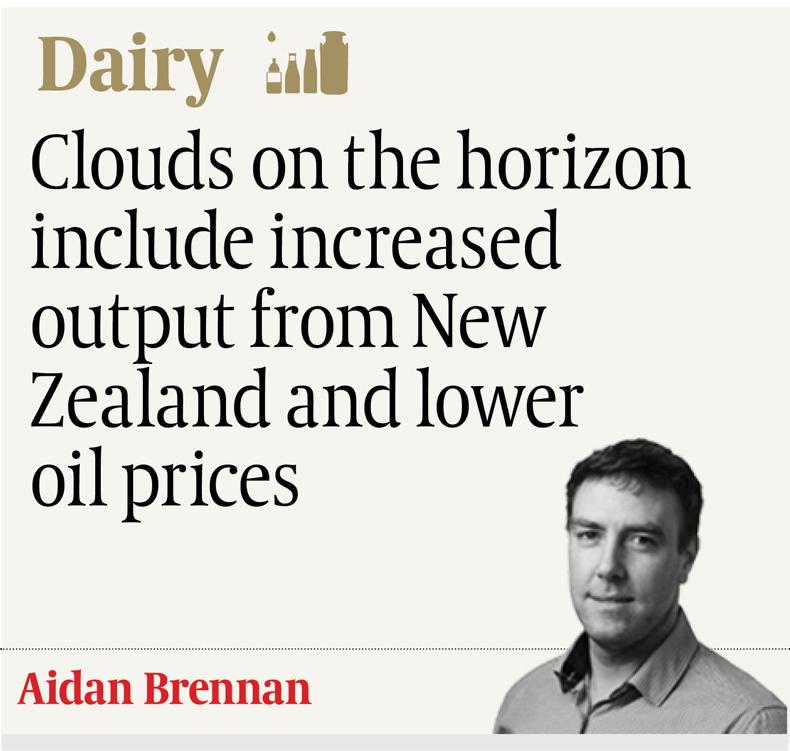
Many dairy farmers will be feeling positive about 2019, simply because it is not 2018. The last 12 months have been challenging from a weather, workload and cost control point of view. Variable costs went up by an average of 2.4c/l and milk prices declined on 2017.
Despite this, the sector remains profitable, with Teagasc predicting the average net margin to be €1,227/ha in 2018.
Will profitability increase in 2019? Giving a definite answer to this is impossible, but the indications are positive, despite a number of challenges. An immediate challenge will come in the form of reduced stock sales. There were 40,000 extra dairy calves born last spring and 400,000 extra born since 2010. Finding buyers for all these calves is a challenge. An extra ship will help, but the local trade is expected to be poor, as many farmers who bought calves last spring have struggled to make a profit from their investment.
There is less certainty around milk prices. Clouds on the horizon include increased output from New Zealand and lower oil prices. When I was in New Zealand in December, milk output was way up and there was grass everywhere after widespread rain. Things have only got better since, with another 150mm of rain falling in mid-December, setting the country up for a very good summer. Increased output from NZ is never good news for milk prices.
Over the last six months, oil prices have gone from $79/barrel to $56/barrel. Low oil price has the effect of reducing demand in the Middle East. However, lower oil price also tends to result in lower feed and fertiliser prices, so while milk price might come down, so too should costs.
Probably the biggest reason for optimism is in relation to intervention stocks of skimmed milk powder. These were a serious cloud over the market in 2018, but the European Commission has done a good job at offloading stocks and there are now only 100,000t in intervention. The amount of product in intervention should be back to normal levels by February and this is a really good boost for prices as it means buyers will have to fight for fresh product.






 This is a subscriber-only article
This is a subscriber-only article









SHARING OPTIONS: